Cocooned from Poverty
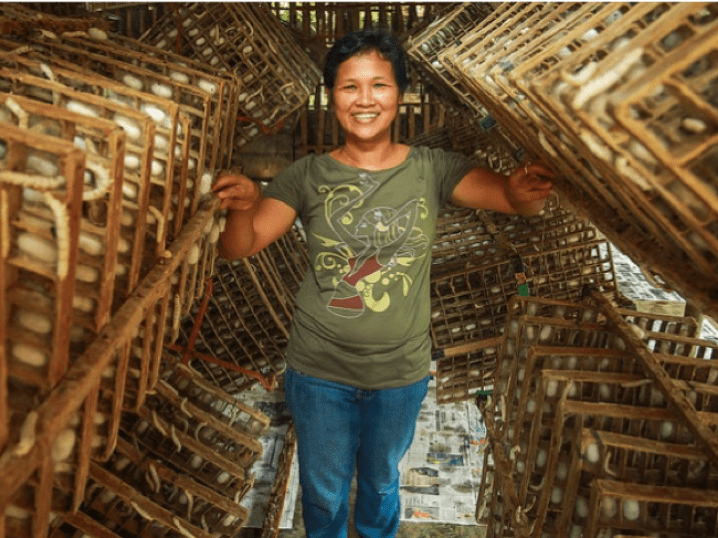
Miko is an eleven-year-old Filipino boy who loves basketball. He already knows what he wants to be when he grows up – a policeman. A fine young policeman in a smart uniform, making sure everyone obeys the law. His parents are very supportive of his dream.
Miko’s parents are silk farmers. It’s a simple life, not as opulent as it sounds, though the process of the cultivation is quite fascinating.
Miko’s mother Arlene is a VisionFund client, now on her fourth loan cycle. The loans helped the family make the necessary investments to keep the business running smoothly, especially allowing them to buy the required fertiliser. Her husband Noel had received training from the Organization for Industrial, Spiritual and Cultural Advancement-International (OISCA) on how to cultivate silkworms, and for over 20 years, it has been the family’s main source of income.
Arlene showed a group of VisionFund staff their farm, explaining to them the elaborate process of silk farming.
Where does silk come from? Well, the process starts with the purchase of silkworm eggs. Arlene buys about six boxes of them at a time, each containing about 21,000 eggs. Once the eggs hatch and the worms come out, the routine of feeding begins.
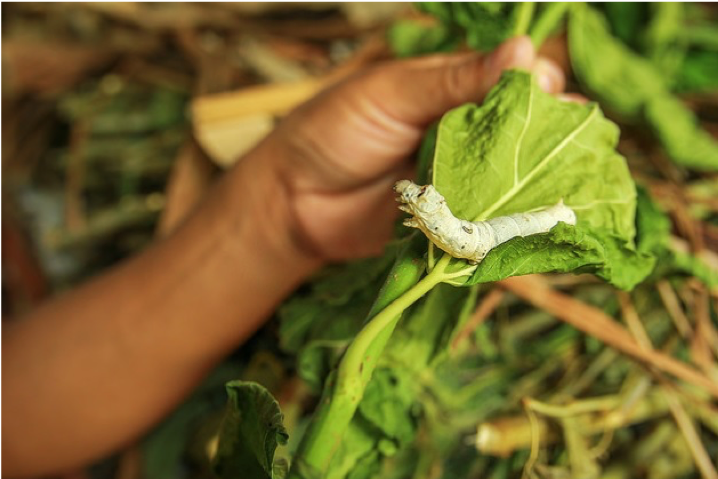
Silkworms are picky eaters: they only eat mulberry leaves. Arlene grows nearly five acres of mulberry bushes just for feeding purposes. They feel blessed that Noel owned land, which allowed them to grow the mulberry themselves. Silkworms only grow as much as they are fed and it would have been expensive to have to pay for the mulberry leaves.
With the help of small loans, she was able to purchase the fertiliser needed for the mulberry bushes, without which, she said, the leaves turn yellow.
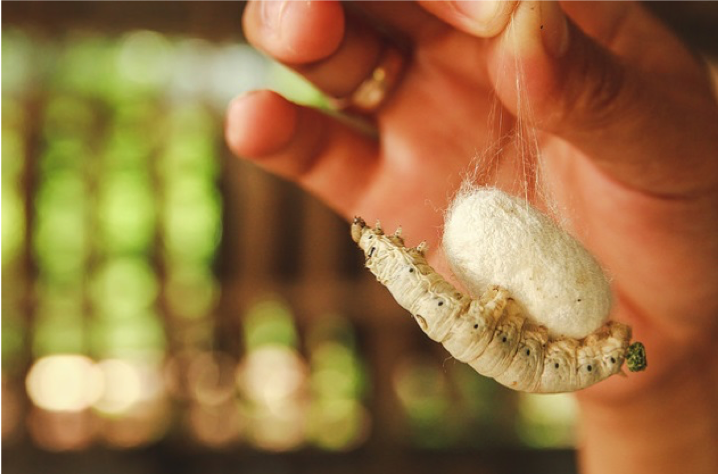
After eating continuously for about 23 days, the silkworms are ready to weave their precious cocoons. It takes about three to eight days for one to be complete. All the silkworm needs is something to attach itself to, and that’s where the wooden spaces below come in.
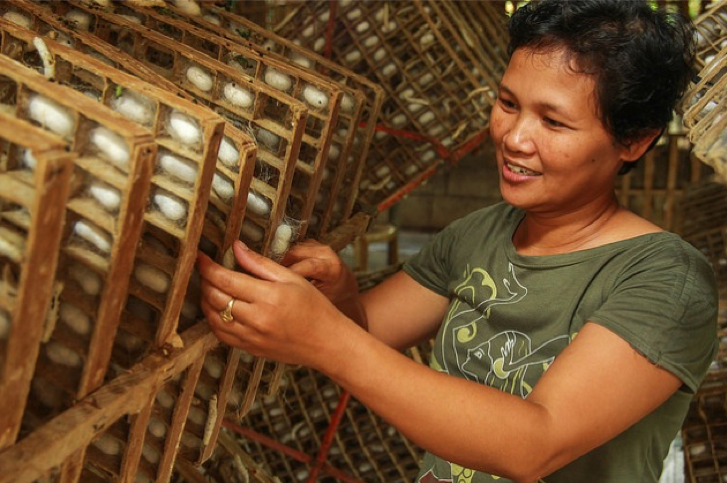
Placing the worms in these wooden spaces makes it easier for harvesting. It’s a breath-taking sight; to see row after row of shimmering cocoons. Did you know that a cocoon is formed by just a single thick strand of fluid secreted by the silkworm? This one strand unravels to about a thousand yards in length.
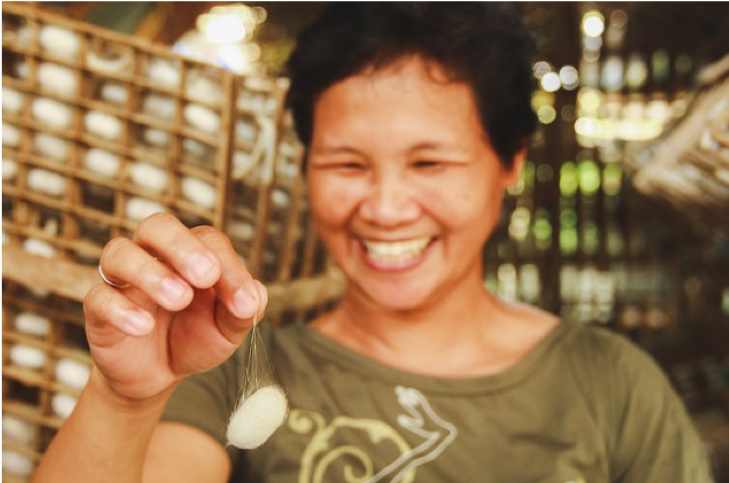
Taking care of the worms up to cocoon-stage is no easy task, especially when there are thousands of them. “It’s like fostering a child,” says Arlene “You feed them. You take care of them. You are cautious of the number of days they exist. You keep an eye of them to make sure they do not get eaten by birds.”
From six boxes of silkworms, Arlene harvests about a 100 kilos of cocoons, which they sell for US $4 per kilo. Harvesting takes place about seven times a year.
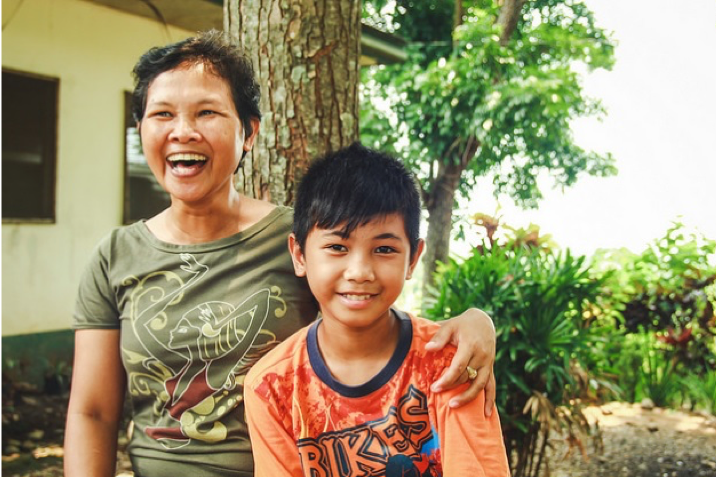
What she likes most about the business? It has no off-season. They’ve even taken on an apprentice to help support the workload. The more the business grows the more possibilities of hiring others from their village to help. This means that more than just their family will benefit from the business.
She is grateful for the steady income it brings, that allows them to meet the needs of the family and make sure that their three children, of whom Miko is the eldest, receives everything he needs for a life filled with possibilities including a solid education.
“It has never been easy,” Arlene confides, “This takes a lot of dedication and hard work.” From cultivating acres of mulberry to nursing thousands of silkworms to tending the creation of thousands of cocoons. But at the end of the day, she is happy as she knows that it’s all worth it. The future? With plans to expand and increase production, more income and new possibilities await, and the future looks bright for this family of farmers.